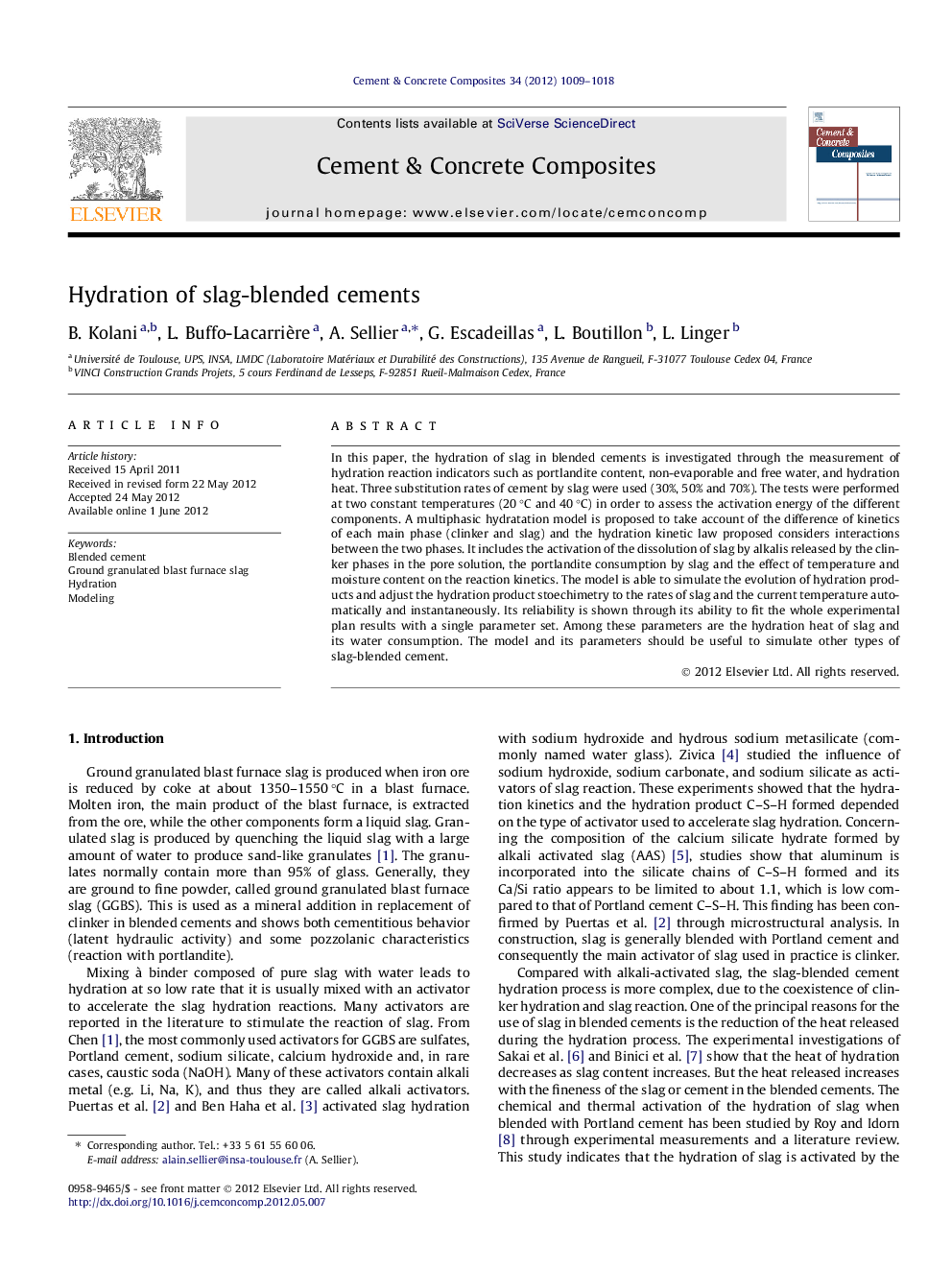| Article ID | Journal | Published Year | Pages | File Type |
|---|---|---|---|---|
| 1455089 | Cement and Concrete Composites | 2012 | 10 Pages |
In this paper, the hydration of slag in blended cements is investigated through the measurement of hydration reaction indicators such as portlandite content, non-evaporable and free water, and hydration heat. Three substitution rates of cement by slag were used (30%, 50% and 70%). The tests were performed at two constant temperatures (20 °C and 40 °C) in order to assess the activation energy of the different components. A multiphasic hydratation model is proposed to take account of the difference of kinetics of each main phase (clinker and slag) and the hydration kinetic law proposed considers interactions between the two phases. It includes the activation of the dissolution of slag by alkalis released by the clinker phases in the pore solution, the portlandite consumption by slag and the effect of temperature and moisture content on the reaction kinetics. The model is able to simulate the evolution of hydration products and adjust the hydration product stoechimetry to the rates of slag and the current temperature automatically and instantaneously. Its reliability is shown through its ability to fit the whole experimental plan results with a single parameter set. Among these parameters are the hydration heat of slag and its water consumption. The model and its parameters should be useful to simulate other types of slag-blended cement.
